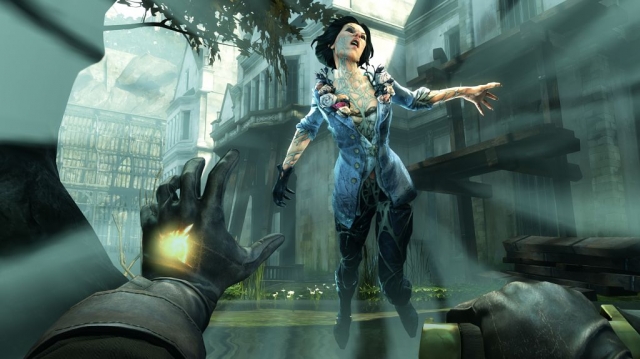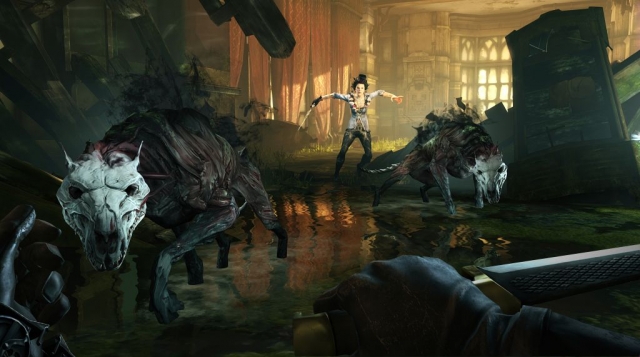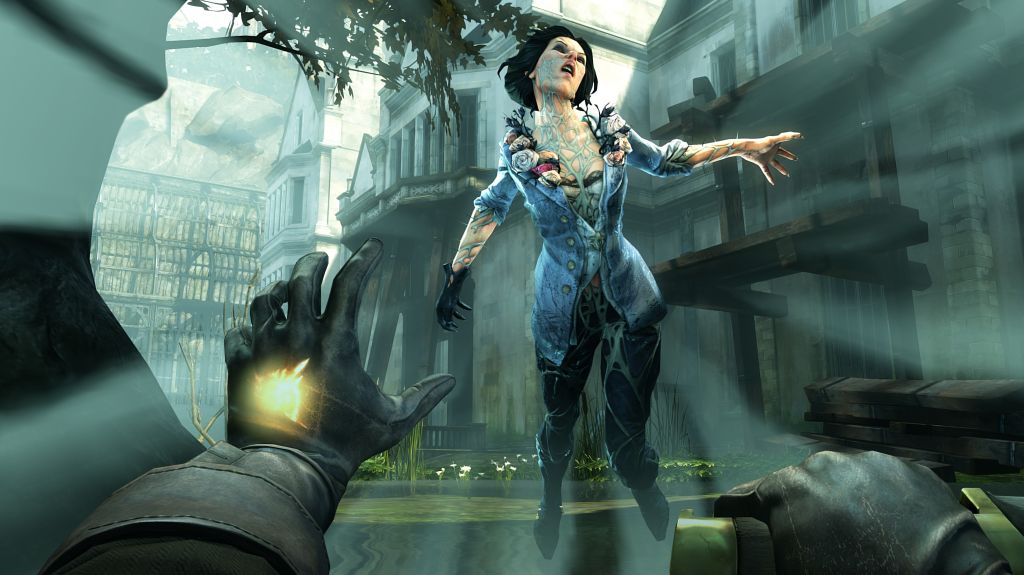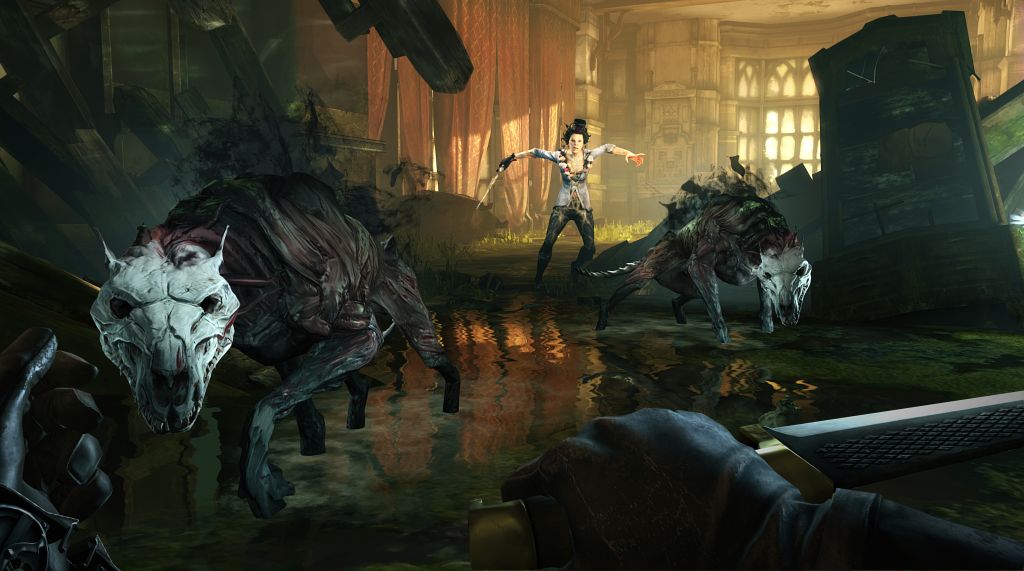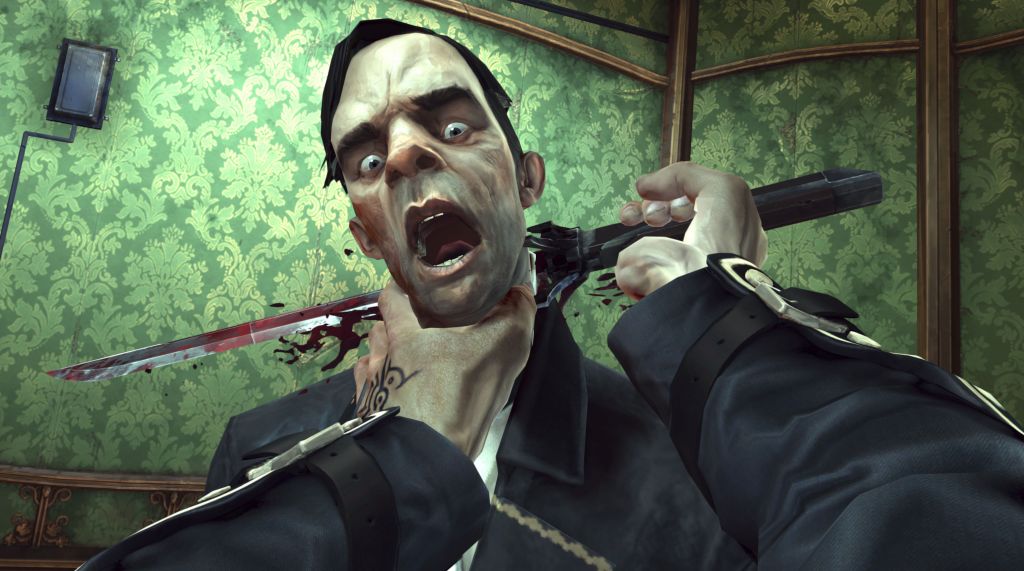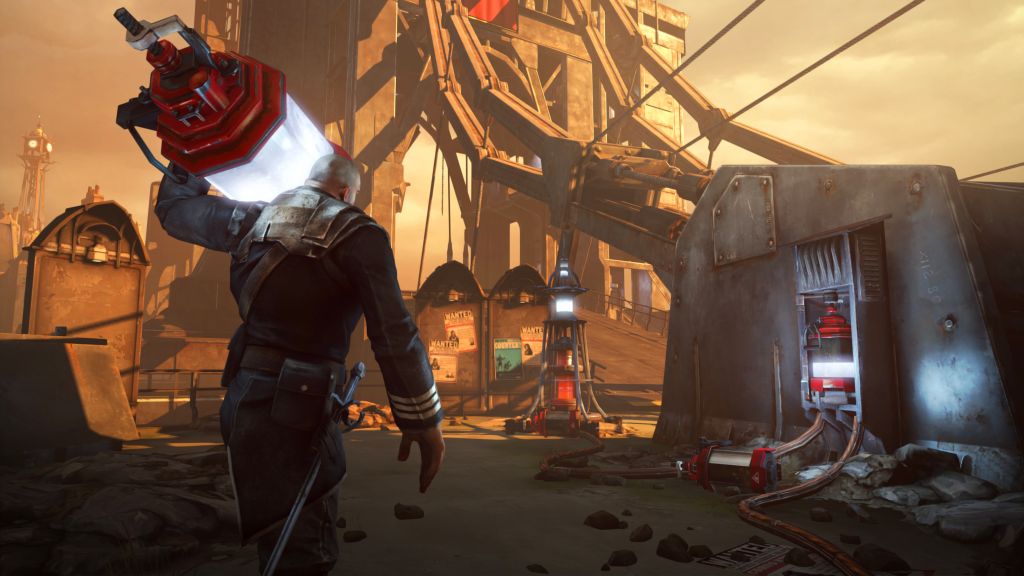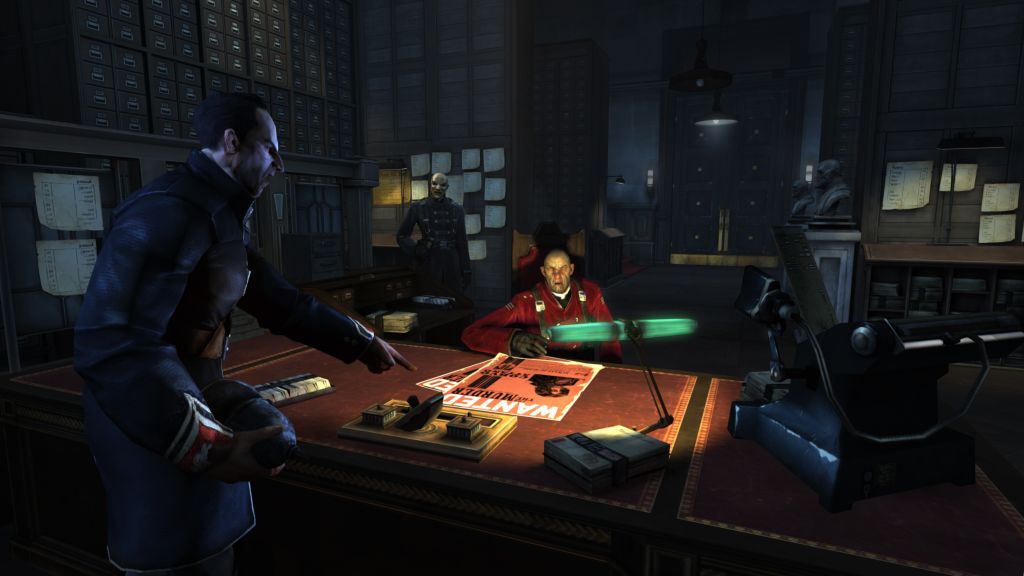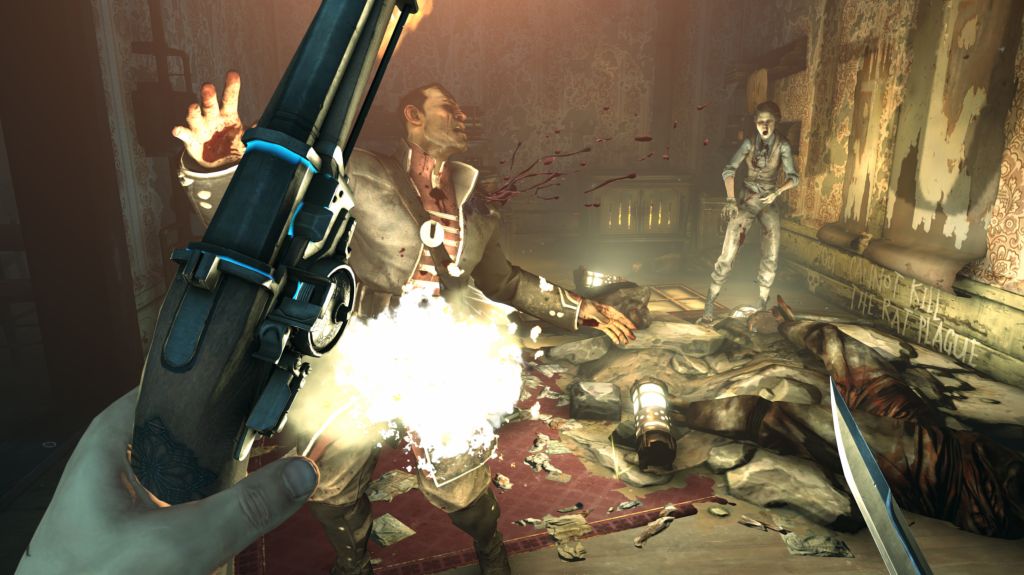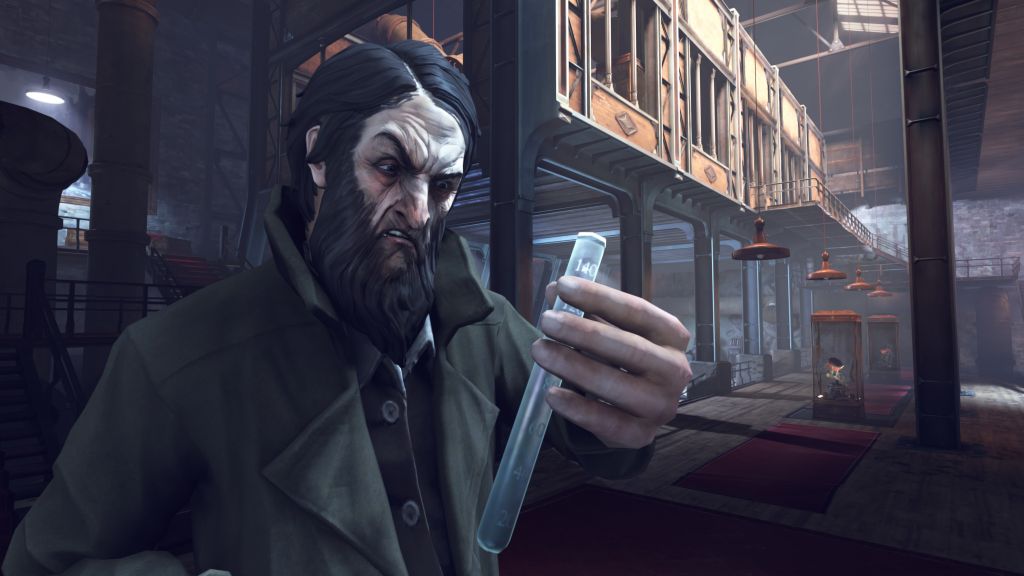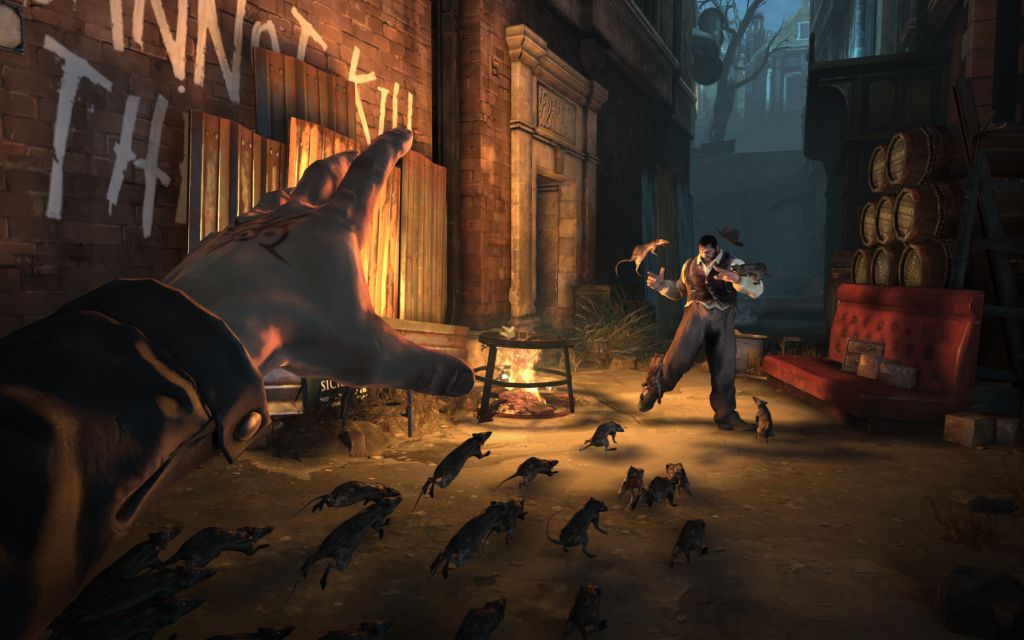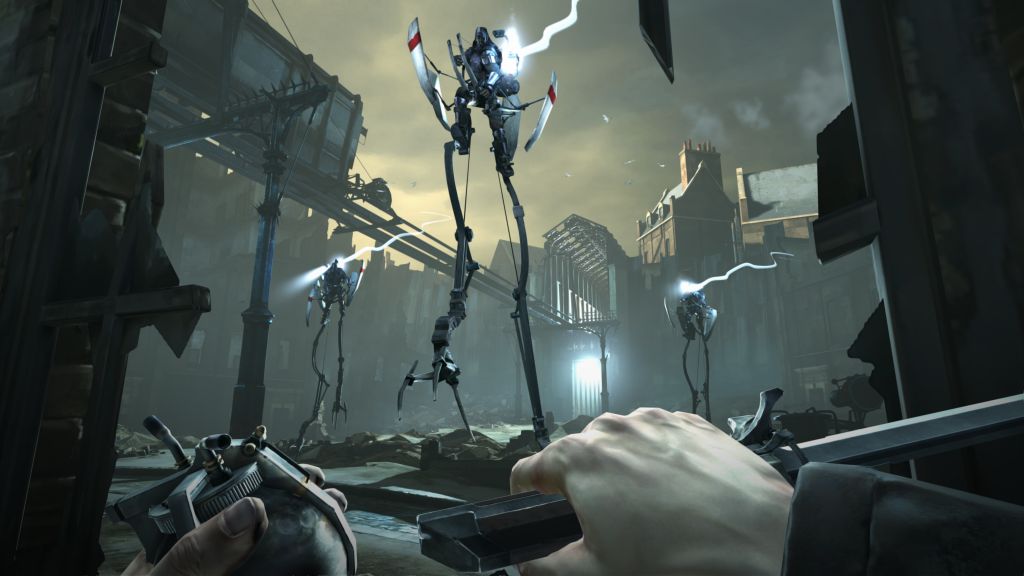Dishonored: Definitive Edition
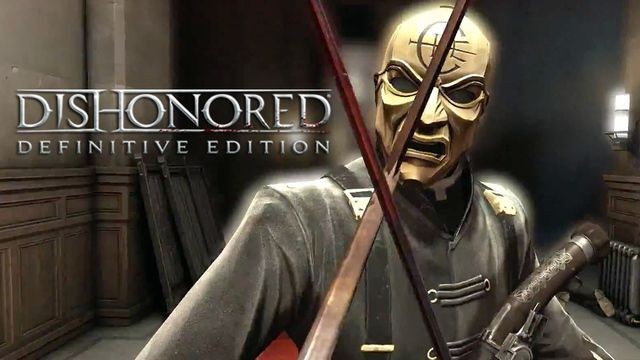
Three years later, the biggest problem with Dishonored is the dissonance between its arsenal and its tone.
You can go into a level of Dishonored loaded for bear, with enough weapons to mow down every living thing in the stage with relative ease. You have a crossbow, a weirdly fast-loading flintlock pistol that potentially has explosive rounds and acts a lot more like a one-barrel sawn-off shotgun, grenades, several supernatural powers that are only really useful for pure offense, and a short-range teleport that makes you the most maneuverable thing on the board. If you decide to mount a full assault in Dishonored, there really isn’t anything that can stop you.
Unfortunately, the game makes it very clear from an early stage that this is a failure condition. The morality system in Dishonored isn’t so much a black-or-white ending selector as it is a difficulty slider; the more bodies you pile up in your wake, the further into anarchy the city slides, and the harder the game gets. Much of your arsenal is thus effectively worthless, because there’s no real reason to use or upgrade lethal weapons. You’re stuck using a very limited supply of sleep darts, a couple of your powers, and the most effective sleeper hold in the history of video games. It can be frustrating, and Dishonored would do well with a level or two where the restrictions are loosened or ignored, or circumstances under which a fatality doesn’t impact the city’s chaos level, such as if you’re very conscientious about disposing of bodies.
Of course, that’s only a drawback if you’re like me and you have a hard time when a game actively discourages you from killing everything you see. If you shrug off Dishonored‘s attempts to convince you not to murder half of Dunwall, and consider the entirety of the game world treating you like a serial killer to be a value add, then you don’t have much to complain about. Maybe the jumping’s a little fiddly, but that’s about it.
Dishonored is still one of the best games of the last several years, which is saying something, and the Definitive Edition packages it together with its three DLC levels. If you haven’t played it, this is the way in which to do so, and it’s got one of the weirdest alternate realities in recent game history, with its whale-oil-fueled, plague-stricken alternate Victorian London. There’s a depth and richness to its world that not a lot of developers would even try to approach, let alone match.
For this package, the game’s received some degree of visual polish, but I’d be lying if I said it made a real difference. Dishonored uses a particular brand of visual stylization that makes everybody look like a Carlos Ezquerra drawing, and the city of Dunwall is a trash-strewn, burned out hellhole under the best of circumstances. It’s deliberately ugly, so any amount of next-generation power isn’t going to do much more than raise the framerate, and the framerate wasn’t awful to begin with.
The Definitive Edition goes for forty bucks, and as such, is about as much as you’d pay for the main game plus both the story-related DLC (The Knife of Dunwall and The Brigmore Witches) on Steam. It’s not a bad deal, although the Dunwall City Trials are entirely skippable; it’s just an arena-combat level with little of the atmosphere or thought that characterizes the rest of the experience. If you’re late to this particular party, the Definitive Edition is a good way to get caught up on one of the strongest action-adventure games of the decade, right in time for its sequel to come out in 2016.
Reviewed By: Thomas Wilde
Publisher: Bethesda Softworks
Rating: 90%
——————————————————————————–
This review is based on a digital copy of Dishonored: Definitive Edition for the PlayStation 4 provided by Bethesda Softworks.
 Game Over Online
Game Over Online